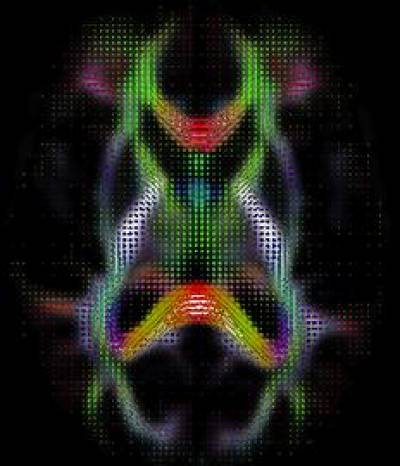
Diffusion-weighted magnetic resonance imaging (DWI) is an advanced imaging technique that measures the motion of water molecules within biological tissue, such as the brain white matter. By monitoring how water moves within the tissue, we can deduce properties of the micro-architecture of the brain. For example, in the regions of the head that contain only fluid (such as the lateral ventricles), water is able to move equally freely in all directions. However, in brain white matter which represents the 'cabling' in the brain, water is normally restricted to moving along the path of the white matter tracts. Apart from acquiring information on the directionality of water movement, we can apply various image processing techniques to the DWI data to visualise the (estimated) structural connections between different brain regions.
For example, a diffusion tensor can be used to model the data (see the picture). In the picture, a diffusion tensor model has been fitted to DWI data. The colours encode the estimated direction of the brain's white matter connections: red indexes left-right, green front-back, and blue top-down tracts. This allows the measurement of various diffusion metrics from the tracts. In dementia, abnormalities in the structure of some tracts have been observed relative to healthy controls. Break-down of the structure of key white matter connections could impair the communication between distinct brain regions.
 Close
Close


